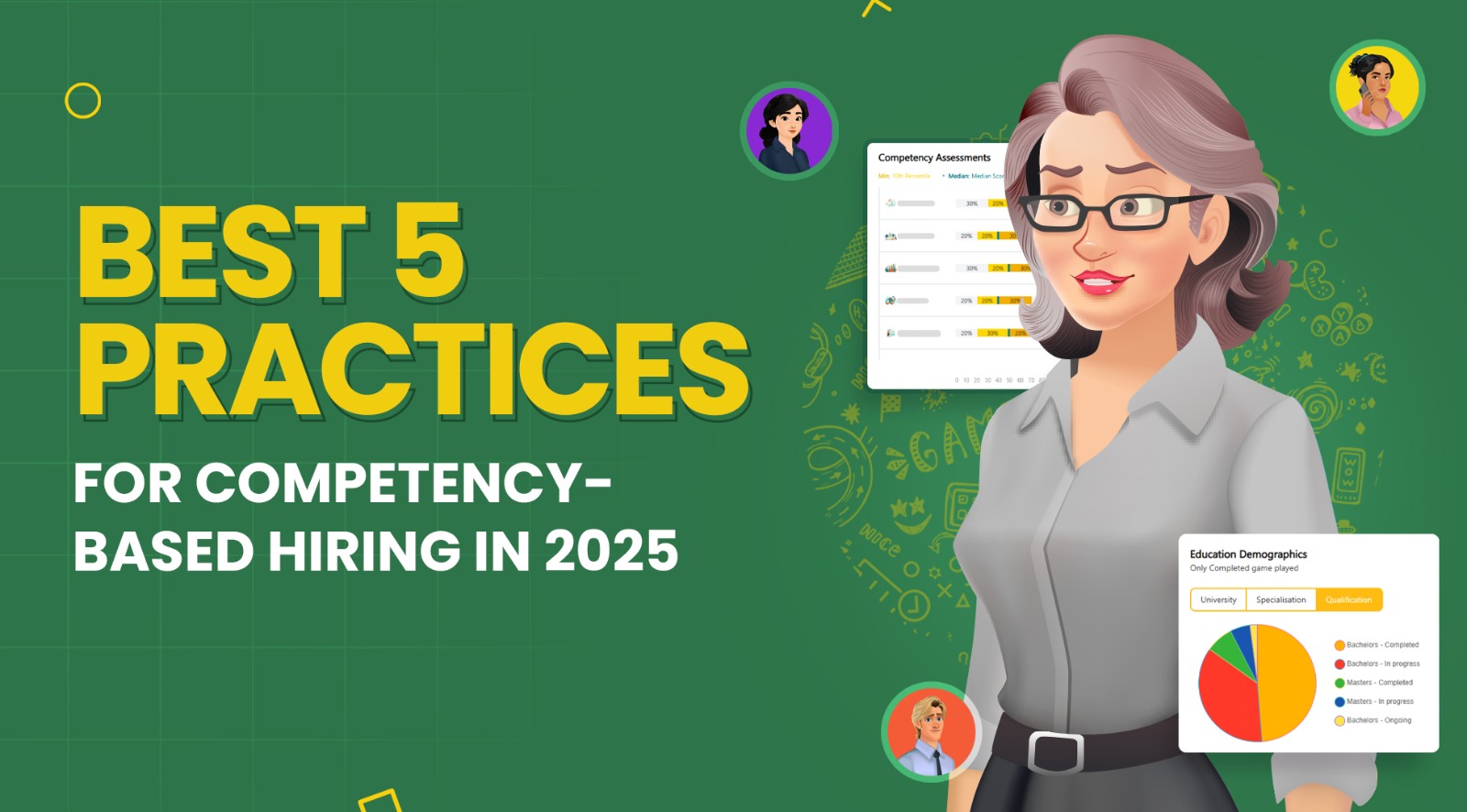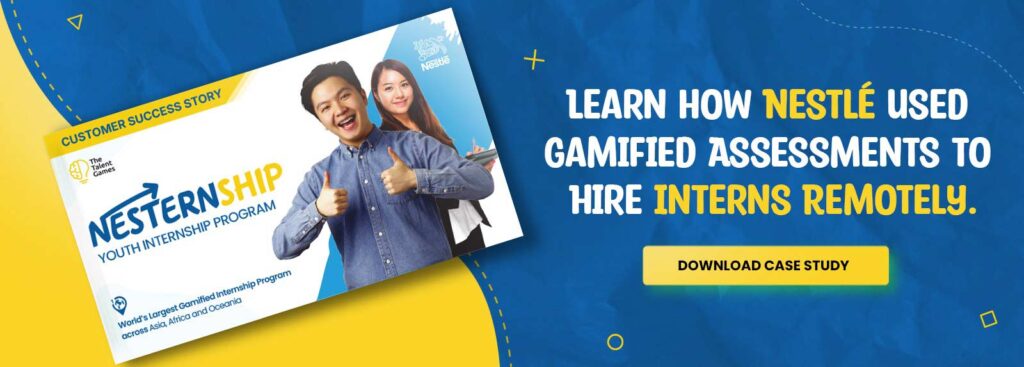This blog discusses how competency-based hiring can be adapted to attract and retain top talent, especially the younger generation, by making the process more structured, fair, and engaging.
Are you looking for candidates who are simply good at one skill, or do you need talent that can grow, adapt, and stay with your company long-term?
In an era where the global talent crisis makes finding skilled professionals harder than ever, 74% of recruiters struggle to find qualified and competent talent.
To stay competitive, companies must rethink how they assess and hire the right people—focusing on competencies rather than just qualifications.
This blog discusses in-depth details about competency-based assessments and what are the best practices to implement them.

What is Competency-Based Hiring?
Competency-based hiring focuses on selecting candidates based on their skills, behaviors, and abilities rather than just their degrees or previous job titles.
It ensures that employees are not only fit for the role today but can also evolve with the organization’s needs in the future.
Unlike traditional hiring, which often relies on gut feelings and resumes, competency-based hiring uses structured assessments, real-world scenarios, and objective evaluation methods to make smarter hiring decisions.
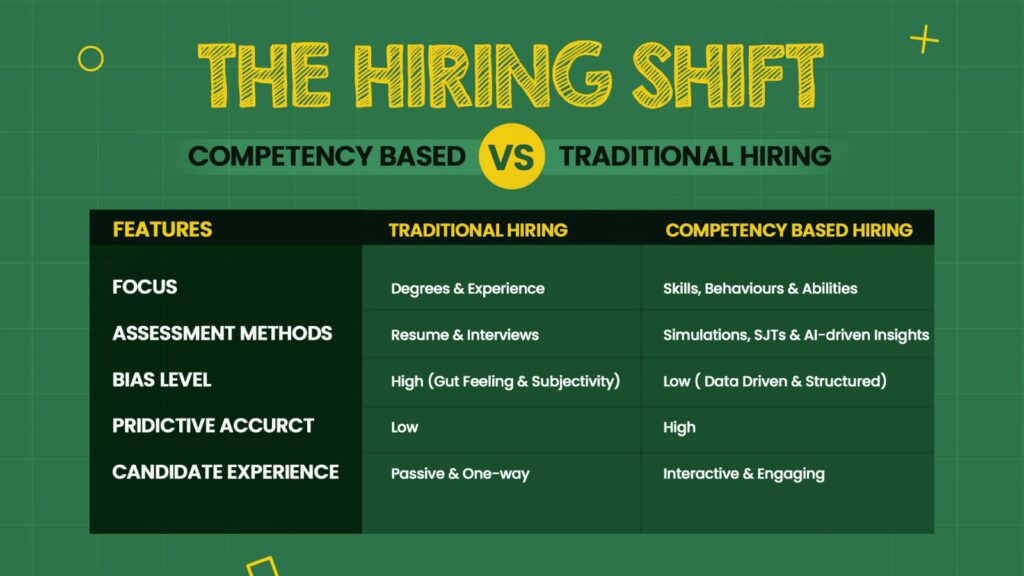
Most In-Demand Competencies Employers Look For
Employers prioritize candidates with the right skills to thrive in dynamic work environments. The following key competencies go beyond qualifications, shaping how individuals contribute and grow within a company.
1. Adaptability
With industries evolving rapidly, employees who can adjust to new technologies, workflows, and challenges ensure long-term success for the company. Adaptability fosters innovation and resilience in the workplace.
2. Problem-Solving
Businesses need employees who can analyze challenges, think critically, and implement effective solutions. Strong problem-solvers drive efficiency and keep projects on track.
3. Collaboration & Teamwork
Workplace success depends on individuals who can work well with diverse teams, communicate effectively, and contribute to collective goals. Strong collaboration leads to improved productivity and workplace harmony.
4. Digital Literacy
With digital transformation reshaping industries, employees must be proficient in modern technologies, data analysis, and AI-driven tools to stay relevant and competitive.
5. Emotional Intelligence
Employees with high emotional intelligence can manage stress, navigate workplace relationships, and lead with empathy, making them invaluable in team-oriented and leadership roles.
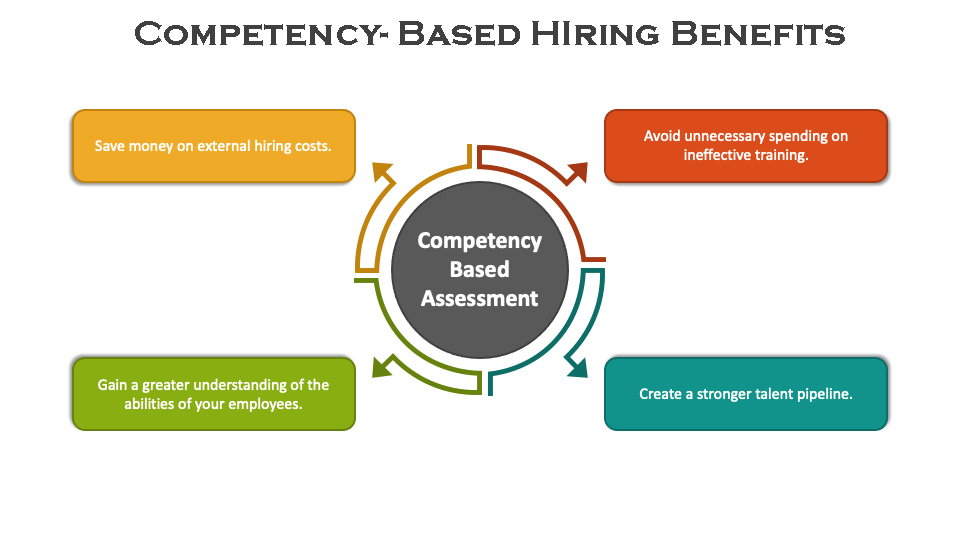
Checklist to Choose the Best Competency-Based Assessment
Choosing the right competency-based assessment is critical to hiring success. Here’s what to look for:
• Relevance to the Role:
The assessment should measure competencies that are truly needed for job success.
• Predictive Accuracy:
Ensure the tool is backed by data showing it can predict future performance.
• Engagement & Employer Branding:
A modern, engaging assessment experience reflects positively on your employer brand, attracting top talent.
• Bias-Free & Inclusive:
The tool should be designed to provide fair opportunities to all candidates.
• Integration with Hiring Workflow:
It should seamlessly fit into your recruitment process without causing delays.
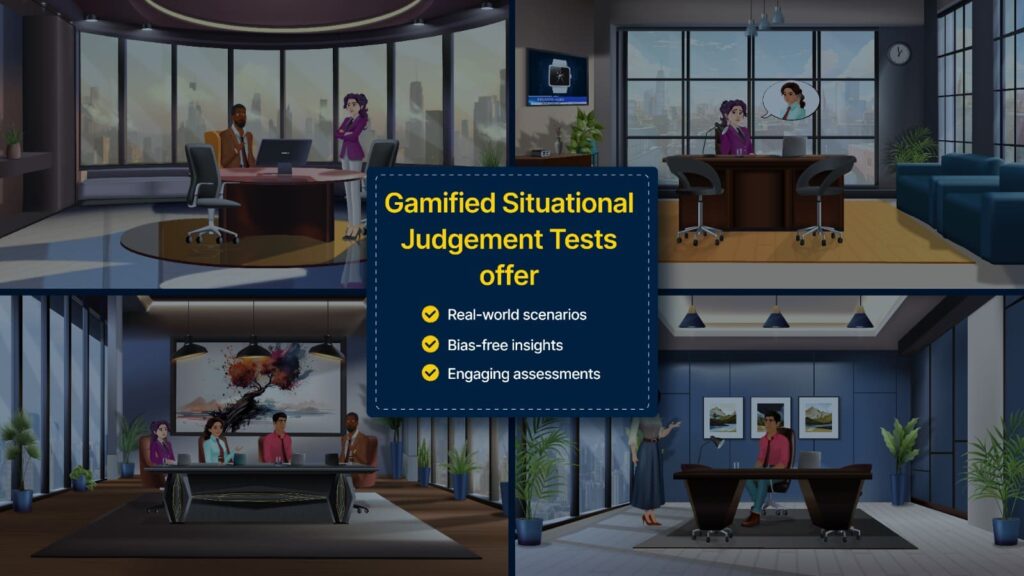
Best 5 Practices for Competency-Based Hiring in 2025
Competency-based assessments help identify the right talent by measuring skills and behaviors essential for success. To maximize their effectiveness, follow these best practices:
1. Define Core Competencies for Each Role
Before starting the hiring process, clearly outline the key competencies required for each position. This includes both technical and soft skills, ensuring alignment with business goals.
For example, if hiring for a customer service role, competencies like empathy, problem-solving, and communication should be prioritized. Use job analysis tools or conduct interviews with top performers to identify essential competencies.
2. Replace Traditional Interviews with Gamified Assessments
Unstructured interviews often lead to biased hiring decisions, and even structured interviews have limitations when it comes to assessing competencies in real-world scenarios. Instead, companies are now replacing interviews with gamified situational judgment tests (SJTs) to evaluate candidate decision-making, adaptability, and leadership skills more effectively.
For example, Nestlé’s ‘Nesternship’ program assessed interns across the Asia, Oceania, and Africa (AOA) region using gamified SJTs powered by The Talent Games. These tests provided a dynamic evaluation of competencies like problem-solving, teamwork, and communication, offering a more reliable selection process than interviews alone.
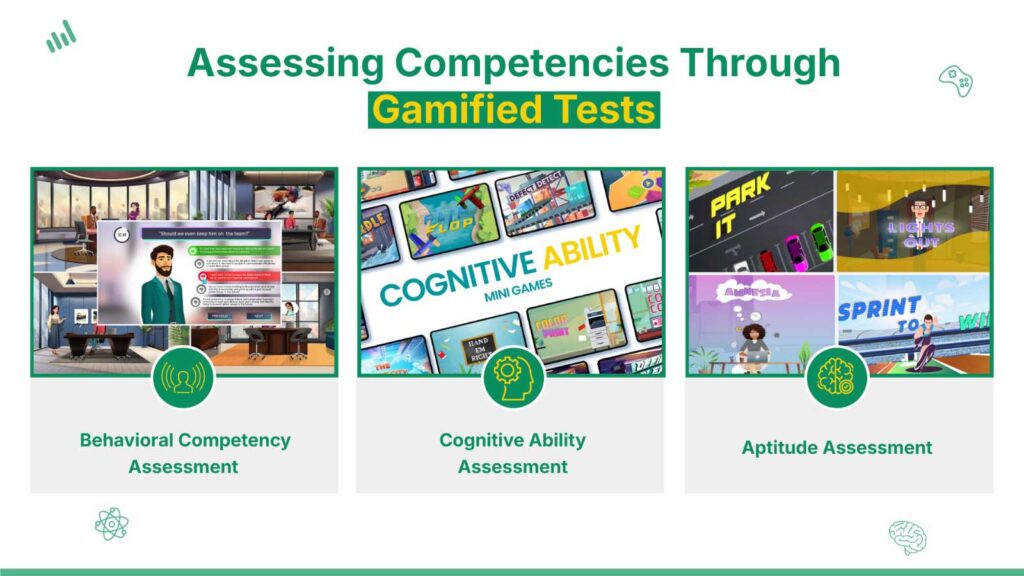
3. Use AI-Powered Talent Analytics
Artificial intelligence has revolutionized hiring by providing data-driven insights into candidate competency levels. AI-powered tools can analyze responses from assessments, video interviews, and past job performance to predict a candidate’s success.
Companies using AI-driven competency assessments reduce hiring bias and improve selection accuracy by 40%, leading to stronger workforce productivity.
4. Continuously Refine Your Competency Models
Competency requirements evolve with industry trends. Regularly update your competency frameworks by analyzing workforce performance data and feedback from hiring managers.
For example, the rise of remote work has made digital collaboration and self-motivation critical competencies. If your hiring model hasn’t accounted for these, you may miss out on top remote talent.
5. Align Hiring with Business Goals
Hiring decisions should directly contribute to your company’s long-term success. Identify how each role fits into future business strategies, and ensure your competency framework reflects this vision.
For example, if a company is shifting towards AI-driven automation, it should prioritize competencies like digital adaptability, problem-solving, and data literacy when hiring new employees.
How to Adopt Competency-Based Hiring
To successfully implement competency-based hiring, organizations need a structured approach. Here are five key steps:
1. Map Competencies to Business Needs
Identify the core competencies required for success in each role and align them with company objectives.
2. Incorporate Validated Assessment Tools
Use reliable and data-backed assessments to measure candidate competencies effectively.
3. Train Hiring Managers on Competency-Based Evaluation
Ensure recruiters and managers are equipped to assess candidates based on competencies rather than subjective impressions.
4. Enhance Candidate Experience
Offer engaging and interactive assessments, such as gamified tests, to improve employer branding and attract top talent.
5. Monitor & Optimize Hiring Outcomes
Continuously analyze hiring results and refine competency models based on performance data and feedback.
ROI of Gamified Competency-Based Recruitment
According to AIHR, the average cost per hire using traditional assessment methods is around $4,000. However, gamified competency-based hiring can cut this cost in half by improving employer branding, reducing hiring time, and enhancing quality of hire.
Companies with a strong employer brand can reduce cost-per-hire by 50%, as they attract better talent with less effort.
Gamified behavioral assessments also contribute to lower turnover rates by ensuring a better fit between the candidate’s competencies and the job role.
Additionally, faster hiring cycles and improved employee performance lead to long-term cost savings, making gamified competency assessments a smart investment.
Conclusion
Competency-based hiring in 2025 demands a strategic approach. By defining clear competencies, leveraging gamified assessments, utilizing AI analytics, and refining competency models, organizations can build high-performing teams that drive success.
